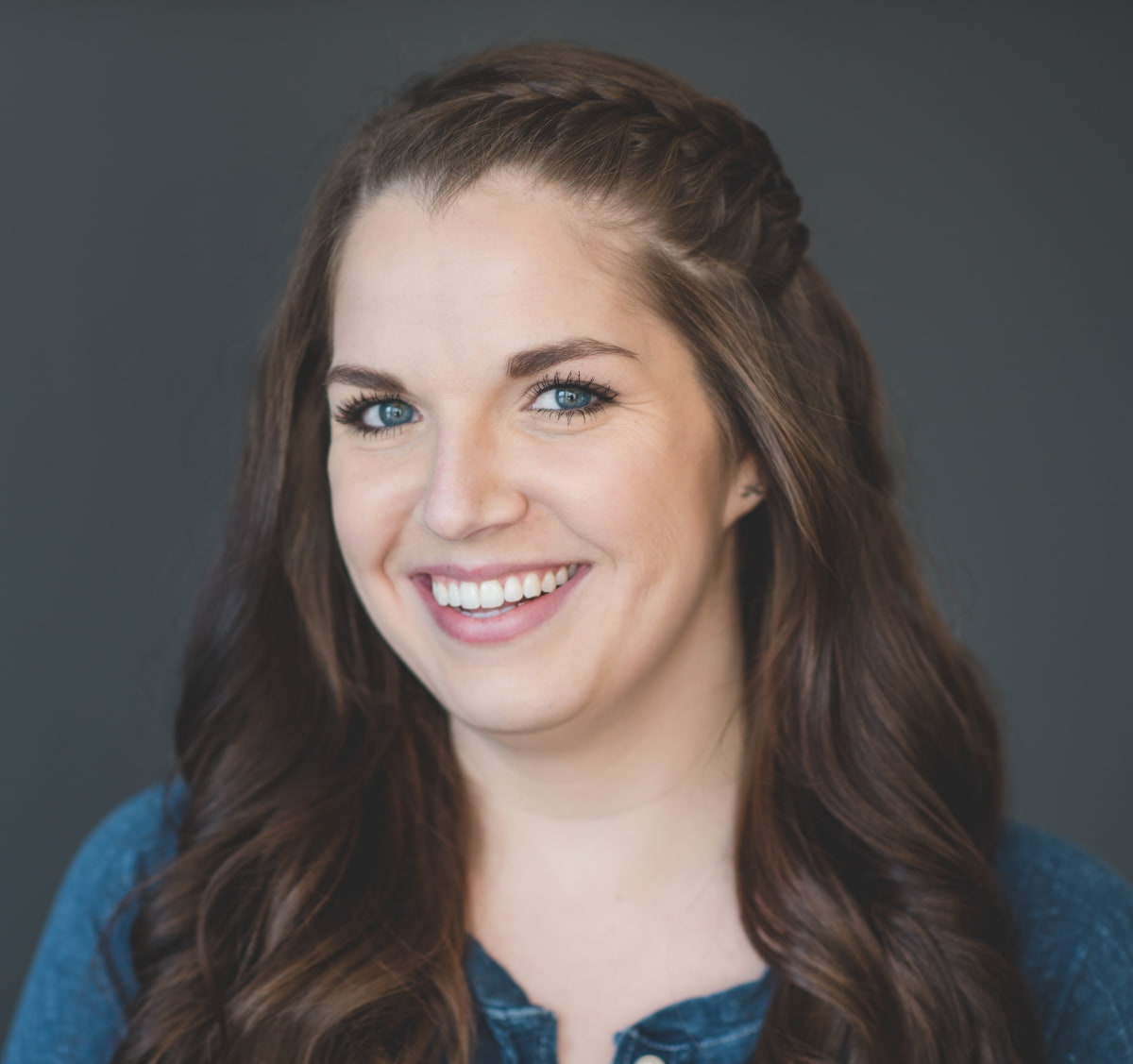3 key takeaways
- Learn what to put on a resume to make a strong first impression
- How to make a resume that highlights your relevant experience, not just job duties
- Why you should include strategic resume content to stand out to employers
Not sure what to put on a resume? You’re not alone. Figuring out what to include (and what to cut) is a tricky balance if you don’t know what hiring managers are actually looking for during the hiring process.
A strong resume isn’t about listing everything you’ve ever done—it’s about choosing the right details to highlight your qualifications. Hiring managers skim quickly, so every section should showcase value and relevance.
This guide breaks down exactly what should be on a resume, how to prioritize key details, and real examples of what employers actually care about.
What to put on a resume
A strong resume includes essential sections like Contact Information, Work Experience, and Education, while optional sections—like Projects or Awards—can add value.
Here’s what to put on a resume:
- Contact Information
- Target Title
- Professional Summary
- Work Experience
- Education
- Certifications
- Skills
- Optional
– Projects
– Awards and Scholarships
– Volunteering and Leadership
– Publications
But how do you decide if you need all of these sections, which deserves the most space, and what specific content to include in each? That comes down to strategic prioritization.
Why resume content matters
Your resume isn’t a career autobiography—it’s a marketing tool. One of the biggest resume content mistakes? Including too many details so your most relevant qualifications get buried.
Instead, you need to think like a hiring manager. On the first pass, they skim in an F-pattern.
- First, they scan across the top (your name, target title, summary)
- Then, they move down the left side (job titles, dates, key metrics)
- Focus declines as they go down (only strong, relevant details keep them engaged)

Research on F-pattern scanning by the Nielsen Norman Group shows that people tend to focus on the left side of the page and the first few words of each line. That means burying key information in long sentences can reduce visibility.
The fix? Start with a master resume. Instead of cramming everything into one version, create a master document with your full work history, skills, and achievements. Then, pull only the most relevant details for each application. This keeps your resume focused, easy to skim, and tailored to the job—without losing important experience.
How to decide if something belongs on your resume
Making smart choices about what to include in your resume comes down to relevance and impact. Before creating or updating your resume, ask yourself three crucial questions.
- Does it align with the job posting?
- Does it demonstrate impact, achievements, or skills?
- Would a recruiter care about this information?
Career strategist and hiring expert David Fano has over 20 years of experience in hiring—reviewing hundreds of thousands of resumes. He has this to say about how to decide what to put on your resume:
Your resume content should highlight the best of your experience—the top 10% that’s most relevant to the job. If something doesn’t support your candidacy or align with what the employer is looking for, it’s just taking up space. Focus on what matters to the employer, and cut the rest.
But while it’s important to cut irrelevant details, be careful not to remove critical information. A common mistake is cutting older experience entirely—even when it showcases key skills. If a past job proves industry expertise or contains transferable skills, it may still add value.

What to include in your resume
Your resume should only include details that support your job application. Here's what that content looks like for each resume section.
Remember, your name and contact information, including your city and state, professional email address, phone number, and LinkedIn profile URL, should always be included at the top.
1. Target job title that matches the application
A job title is one of the first things a recruiter searches the ATS for. That’s why ATS optimization should start at the very top of your resume.
Your target title needs to be the same as the position title in the application for your resume to be discovered as relevant.
Sometimes, this might look like:
- Content Marketer → Content Marketing Manager
- Software Engineer → Frontend Software Engineer
- Social Media Manager → Social Content Creator
2. A well-written resume summary
Your resume summary needs to be a concise, high-impact statement. It’s not a place for generic buzzwords, your career goals, or ambiguity. Instead, it should tell hiring managers:
- Who you are professionally
- What you bring to the table
- How your experience aligns with the role
A strong resume summary focuses on measurable impact and key skills relevant to the job. Below is an example.
Weak summary:
❌ Hardworking professional with a proven track record of success and a passion for teamwork. Looking to grow my career in Marketing.
Strong Summary
✅ Marketing specialist with 5+ years of experience driving 30% YoY growth through data-driven content strategies. Skilled in SEO optimization, paid media, and conversion rate optimization, with a track record of increasing lead generation by 50%. Adept at executing multi-channel campaigns in the SaaS industry, leveraging performance analytics to refine engagement strategies and maximize ROI.
Pro Tip: When editing your resume for a specific job, tailor your summary to the job description by incorporating keywords and quantifiable achievements. This will make your content stand out as what employers look for in a resume.
3. Career-defining work experience
Your work experience isn’t just a job history—it’s proof of your impact. Hiring managers want to understand how well you did your job and what results you achieved.
A strong Experience section highlights how you contributed to business goals, improved processes, or solved problems. That’s why measurable achievements matter most.
Here's how to get it right:
For the resume format of this section, list your relevant work experience in reverse chronological order, starting with your most recent job and working backward—including all employment dates. Then, beneath each role, include 3-5 resume bullet points that show measurable results and impact.
One way to showcase impact is by structuring your resume bullet points using the formula below.

Weak bullet point:
❌ Weak: Managed customer service requests.
Strong bullet point:
✅ Strong: Resolved 200+ weekly customer service requests and increased customer satisfaction by 20% through strategic chatbot implementation and training within six months.
The difference? The second version starts with a clear action verb, quantifies the work, and shows a measurable outcome—giving hiring managers real insight into your contributions.
How to include data in your professional experience
Numbers make your resume stronger by adding context and credibility. If you're not sure how to quantify your work, consider including:
- Volume: Number of projects completed, clients served, or tasks handled.
- Growth: Percentage increases in revenue, engagement, or efficiency.
- Time Savings: Hours reduced by process improvements or automation.
- Scale: Team size managed, budget handled, or market reach.
- Performance Metrics: Customer satisfaction scores, sales conversions, or response rates.
Even if your role doesn’t involve direct metrics, there’s almost always a way to show impact.
Think about what changed because of your work—whether it’s increased efficiency, improved results, or a better experience. If a bullet point doesn’t demonstrate relevancy and value, it likely doesn’t belong on your resume.
4. Relevant education and certifications
Your education won’t change, but what you list should match job requirements. If a master’s degree is required (and you have one) don’t just list a bachelor’s in your Education section.
The same rule applies to certifications—if they’re relevant and still valid, include them. (Especially if they're part of the job description or you work in an industry that values certifications.) If not, leave them off. Every detail should support your candidacy.
5. Skills that prove value
Your skills section shouldn’t just be a list—it should demonstrate how you use your expertise to drive results. Hiring managers scan for more than just keywords; they want to see real-world applications that prove your impact.
That’s why your professional skills should appear in two key places:
- A dedicated skills section for easy scanning
- Throughout your experience to show how they’ve been applied
Strong resumes don’t just match job descriptions or show your career history—they also highlight a mix of hard skills and soft skills that demonstrate problem-solving, collaboration, and leadership.
Pro Tip: Grouping relevant skills into clear categories makes your resume more readable, relevant, and results-driven—helping hiring managers quickly assess your fit for the role.
When to include additional resume content
Some sections aren’t required for every resume, but they can make a big difference if they showcase relevant experience, transferable skills, or industry knowledge.
Examples of what to put on a resume in additional sections:
- Include projects: If they demonstrate technical skills, creativity, or problem-solving—especially if they mirror the work you’d do in the role.
- List volunteer work: If it highlights leadership, collaboration, or industry-relevant experience.
- Add relevant coursework: If you’re a student or career changer and it directly applies to the job.
- List publications, awards, or scholarships: If they set you apart in your field.
Think of these sections as bonus content—they should add extra value, not just extra words. Here's what this looks like on a resume:

Pro Tip: Not sure what to include in each section? Teal’s AI Resume Builder and suite of resume tools provide expert guidance for every section, so your resume always follows modern best practices.
What not to put on a resume
Knowing what to put on a resume is only half the battle—just as important is knowing what to leave off. Hiring managers scan resumes quickly, and including unnecessary, outdated, or irrelevant details can hurt your chances of landing an interview.
Here are some common resume red flags:
- Outdated formats: Avoid objective statements, dense paragraphs, or overly designed layouts that make your resume hard to read.
- Too much personal information: Employers don’t need your full home address, marital status, social security number, or a headshot (unless required by the country you’re applying in).
- Unnecessary job experience: Jobs older than 15 years? Irrelevant to the role? Leave it off.
- Generic soft skills without proof: Simply listing “hardworking,” “team player,” or “good communicator” doesn’t add value.
- References available upon request: Hiring managers already assume this. Save space by removing it and using that real estate for something impactful.
- Unnecessary graphics or images: Fancy charts, headshots (unless required by country norms), and infographics often can't be parsed by ATS software. Stick to a clean, text-based format.
Build a resume that gets results
Your resume isn’t just a record of your experience—it’s a tool to help you land interviews. Every section, bullet point, and skill should work toward that goal.
- Before submitting your resume, take a final look and ask yourself:
- Is every detail relevant to this job?
- Does my experience highlight measurable impact?
- Am I making it easy for hiring managers to see my value?
And if you’re unsure what to include or leave out, Teal's AI Resume Builder takes the guesswork out of your resume writing strategy. With every essential section built in—plus expert guidance based on modern best practices to use as you write—Teal helps you create a resume that’s structured for success.



.jpg)



